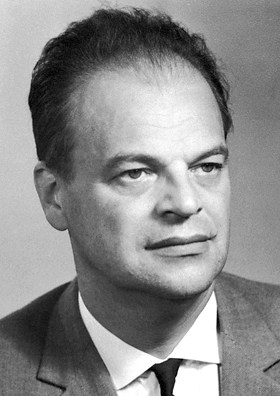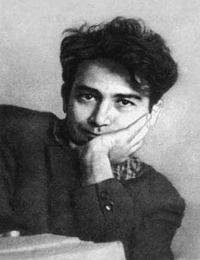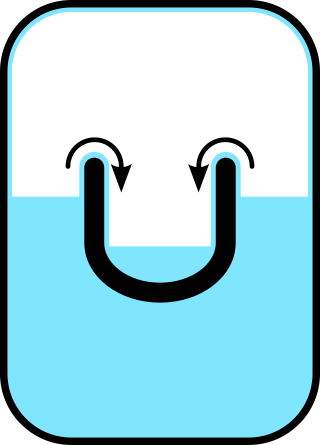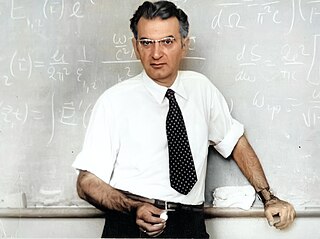
Andrei Dmitrievich Sakharov was a Soviet physicist and a Nobel Peace Prize laureate, which he was awarded in 1975 for emphasizing human rights around the world.

Alexander Mikhailovich Prokhorov was a Russian physicist and researcher on lasers and masers in the former Soviet Union for which he shared the Nobel Prize in Physics in 1964 with Charles Hard Townes and Nikolay Basov.

Alexei Alexeyevich Abrikosov was a Soviet, Russian and American theoretical physicist whose main contributions are in the field of condensed matter physics. He was the co-recipient of the 2003 Nobel Prize in Physics, with Vitaly Ginzburg and Anthony James Leggett, for theories about how matter can behave at extremely low temperatures.

Moscow Institute of Physics and Technology, is a public research university located in Moscow Oblast, Russia. It prepares specialists in theoretical and applied physics, applied mathematics and related disciplines.

Nikolay Gennadiyevich Basov was a Russian Soviet physicist and educator. For his fundamental work in the field of quantum electronics that led to the development of laser and maser, Basov shared the 1964 Nobel Prize in Physics with Alexander Prokhorov and Charles Hard Townes.

Nikolay Nikolayevich Bogolyubov was a Soviet, Ukrainian and Russian mathematician and theoretical physicist known for a significant contribution to quantum field theory, classical and quantum statistical mechanics, and the theory of dynamical systems; he was the recipient of the 1992 Dirac Medal.

Gurgen Ashotovich Askaryan was a prominent Soviet - Armenian physicist, famous for his discovery of the self-focusing of light, pioneering studies of light-matter interactions, and the discovery and investigation of the interaction of high-energy particles with condensed matter.
Vera Yurasova was a Russian physicist who contributed to the study of the interactions between ion beams and solid surfaces, both in their experimental characteristics and their physical mechanisms.

Alexey Andreevich Anselm was a Russian theoretical physicist, Doctor of Physical and Mathematical Sciences, professor, director (1992–1994) of the B.P. Konstantinov Petersburg Nuclear Physics Institute (PNPI), member of: the Russian and American Physical Society, the executive committee of the Nuclear Physics Branch of the Russian Academy of Sciences, the editorial board of the Russian journal “Yadernaya Fizika”.
Alexander Zakharovich Patashinski was a Soviet and Russian physicist. He is a professor for Materials Research Scientist and professor at Northwestern University in Evanston, Illinois.
The Soviet Peace Committee was a state-sponsored organization responsible for coordinating peace movements active in the Soviet Union. It was founded in 1949 and existed until the fall of the Soviet Union in 1991.
Emmanuel I. Rashba is a Soviet-American theoretical physicist of Jewish origin who worked in Ukraine, Russia and in the United States. Rashba is known for his contributions to different areas of condensed matter physics and spintronics, especially the Rashba effect in spin physics, and also for the prediction of electric dipole spin resonance (EDSR), that was widely investigated and became a regular tool for operating electron spins in nanostructures, phase transitions in spin-orbit coupled systems driven by change of the Fermi surface topology, Giant oscillator strength of impurity excitons, and coexistence of free and self-trapped excitons. The principal subject of spintronics is all-electric operation of electron spins, and EDSR was the first phenomenon predicted and experimentally observed in this field.

Superfluidity is the characteristic property of a fluid with zero viscosity which therefore flows without any loss of kinetic energy. When stirred, a superfluid forms vortices that continue to rotate indefinitely. Superfluidity occurs in two isotopes of helium when they are liquefied by cooling to cryogenic temperatures. It is also a property of various other exotic states of matter theorized to exist in astrophysics, high-energy physics, and theories of quantum gravity. The theory of superfluidity was developed by Soviet theoretical physicists Lev Landau and Isaak Khalatnikov.

Gregory Markari (Markarovich) Garibian was a Soviet Armenian physicist, academician-secretary of the Department of Physics and Mathematics of the Armenian Academy of Sciences (AS)(1973–1991). He is known for developing the Theory of Transition Radiation and showing the feasibility of functional transition radiation detectors (TRDs). [8] [9]

Alexander Arkadyevich Migdal is a Russian-American physicist and entrepreneur, formerly at Landau Institute for Theoretical Physics, Space Research Institute, Princeton University, ViewPoint Corp, Magic Works LLC, and now at Migdal Research LLC.
Vsevolod Feliksovich Gantmakher, was a prominent Russian experimental physicist of Jewish origin, was born in Moscow as son of Felix Gantmacher, a prominent mathematician. He was a full Member of the Russian Academy of Sciences and is known for his fundamental contributions to condensed matter physics especially for the Gantmakher effect and Gantmakher–Kaner oscillations.
In 1965 a human rights movement emerged in the USSR. Those actively involved did not share a single set of beliefs. Many wanted a variety of civil rights — freedom of expression, of religious belief, of national self-determination. To some it was crucial to provide a truthful record of what was happening in the country, not the heavily censored version provided in official media outlets. Others still were "reform Communists" who thought it possible to change the Soviet system for the better.

Andrei Viktorovich Gaponov-Grekhov was a Russian (Soviet) physicist, a Full Member of the USSR Academy of Sciences, the founder of the Institute of Applied Physics in Nizhny Novgorod, and its first director in 1976-2003.
Igor Ekhielevich Dzyaloshinskii, was a Russian theoretical physicist, known for his research on "magnetism, multiferroics, one-dimensional conductors, liquid crystals, van der Waals forces, and applications of methods of quantum field theory". In particular he is known for the Dzyaloshinskii-Moriya interaction.
YuryMikhailovich Bunkov is a Russian experimental physicist, specializing in condensed matter physics. He is known as one of the co-discoverers of the quantum spin liquid state.











